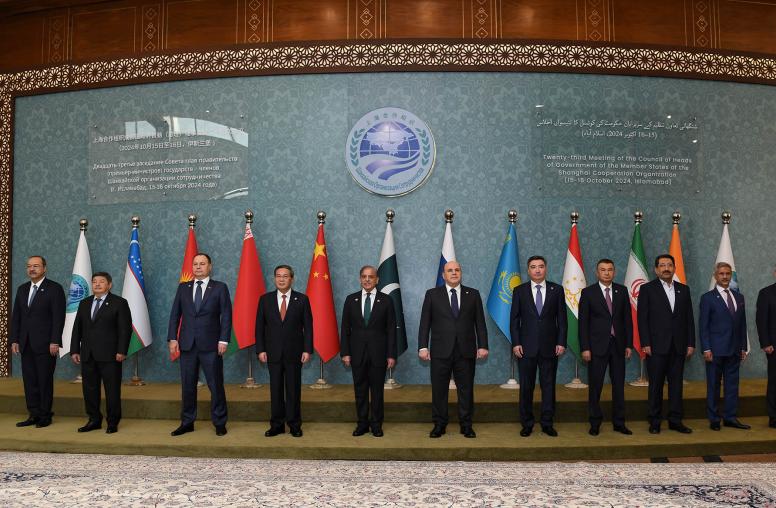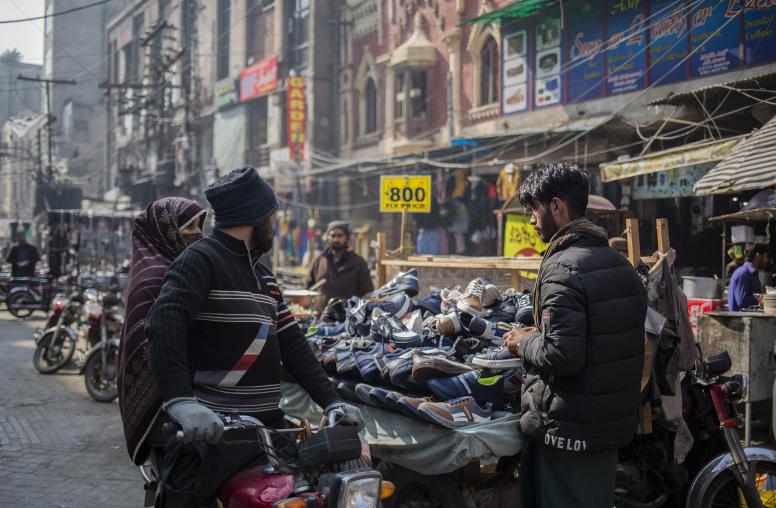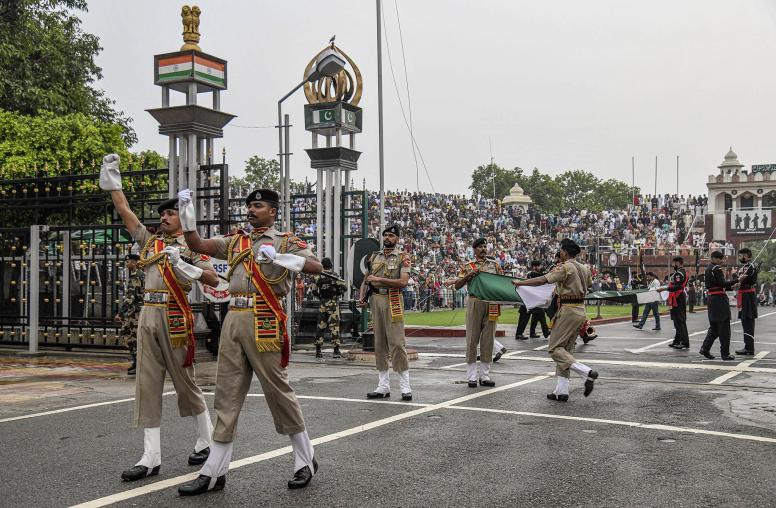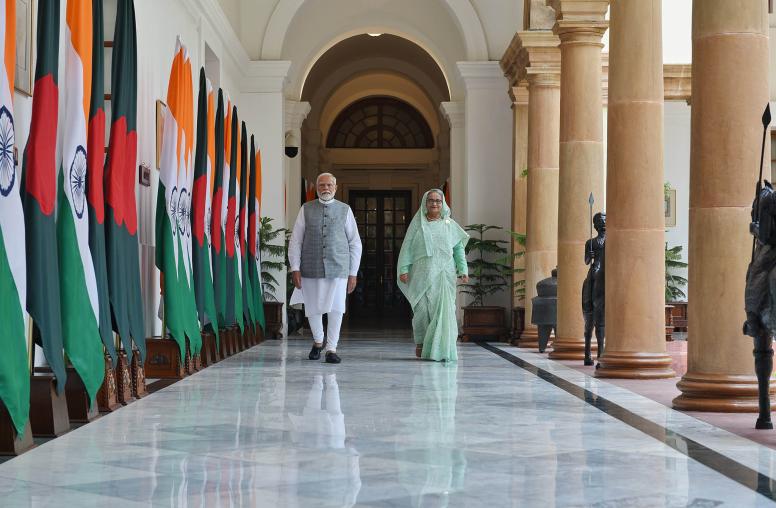Pakistan’s Growing Problem with its China Economic Corridor
Pakistan’s inability to undertake long-overdue economic reforms is creating challenges for the China-Pakistan Economic Corridor.
The China-Pakistan Economic Corridor (CPEC) has deepened the decades-long strategic relationship between the two Asian nations. But it has also sparked criticism, including that it burdens Pakistan with mountains of debt, allowing China to use “debt-trap diplomacy” to gain access to strategic assets. While some of this criticism is valid, a closer look indicates that concerns around debt sustainability, tepid economic growth and overall economic and social instability in Pakistan predate CPEC. Moreover, it is the lack of long-term structural reforms that has stymied equitable socioeconomic progress in Pakistan.

The foundations of CPEC, part of China’s Belt and Road Initiative, were laid during Chinese Premier Li Keqiang’s visit to Islamabad in May 2013. At the time, Pakistan was reeling from regular bomb blasts, chronic power shortages and weak economic growth. China made a commitment to play an integral role in Pakistan’s economy, with Li exhorting both countries to “focus on carrying out priority projects in connectivity, energy development and power generation and promoting the building of a China-Pakistan economic corridor.”
Nawaz Sharif, Pakistan’s prime minister-elect at the time, leaned into CPEC, leveraging Chinese financing and technical assistance in an attempt to end power shortages that had paralyzed his country’s economy. Eight years later, China’s influence in Pakistan has only increased.
China Is Pakistan’s Largest Bilateral Creditor
China’s ability to exert influence on Pakistan’s economy has grown substantially in recent years, mainly due to the fact that Beijing is now Islamabad’s largest creditor. According to documents released by Pakistan’s finance ministry, Pakistan’s total public and publicly guaranteed external debt stood at $44.35 billion in June 2013, just 9.3 percent of which was owed to China. By April 2021, this external debt had ballooned to $90.12 billion, with Pakistan owing 27.4 percent —$24.7 billion — of its total external debt to China, according to the International Monetary Fund (IMF).
Nevertheless, China has, to date, refrained from directly influencing Pakistan’s economic policies. In fact, as the ongoing IMF loan program has indicated, the IMF, World Bank and Asian Development Bank (ADB) continue to be the key players when it comes to determining the fiscal policies that are adopted in Islamabad.
Contextualizing China’s Economic Role in Pakistan
Pakistan and China have a strategic relationship that goes back decades. It was then only natural that Pakistan would turn to China at a time when it needed a rapid increase in external financing to meet critical investments in hard infrastructure, particularly power plants and highways. CPEC’s early harvest projects met this need, leading to a dramatic increase in Pakistan’s power generation capacity, bringing an end to supply-side constraints that had made rolling blackouts a regular occurrence across the country.
Additionally, China provided financial and technical expertise to help Pakistan build its road infrastructure, expanding north-south connectivity to improve the efficiency of moving goods from Karachi all the way to Gilgit-Baltistan. These investments were critical in better integrating the country’s ports, especially Karachi, with urban centers in Punjab and Khyber-Pakhtunkhwa provinces.
Chinese investments have not been narrowly focused on bilateral governmental investments. In 2016, 40 percent of Pakistan Stock Exchange’s shares were sold to a Chinese consortium, and in 2018, Ant Financial, an affiliate of the Chinese Alibaba Group, invested $184.5 million to buy a 45 percent stake in Pakistan’s Telenor Microfinance Bank. The momentum has picked up in recent months: In November 2020, two Chinese companies reached an agreement to set up a cellphone manufacturing plant in Faisalabad; Challenge, a Chinese textile manufacturer, is investing $150 million to build a manufacturing facility in Lahore to export sportswear to Western markets; and Chinese investments are also changing conservative Pakistan, with Hui Coastal Brewery and Distillery Limited initiating operations to produce beer in Balochistan. All of this has created employment and economic opportunities across Pakistan.
Pakistan’s Own Shortcomings Are Exacerbating the Debt Crisis
A recent USIP report argued CPEC projects “can exacerbate underlying weaknesses in governance and contribute to an already unsustainable debt load.” In order to fully maximize the potential of current Chinese investments, and to build capacity to pay back the dollar-denominated debts taken on to finance these projects, Pakistan’s policymakers need to pursue much-needed structural reforms that address these underlying weaknesses.
The need for reform has been articulated in successive IMF programs, numerous World Bank and ADB reports, and by a broad segment of Pakistan’s economic analysts. Reforms are badly needed in the power sector, for example, where increased power generation has aggravated the sector’s debt crisis — as of June 2020, more than $13 billion had been accumulated in what is known as circular debt.
Pakistan’s policymakers need to look inward and do the hard work of restructuring and reforming the economy. Doing so is also in the interest of the United States and China — both countries would like to see an economically and socially stable Pakistan that is able to pay back its debts and create economic opportunities for tens of millions of citizens, the majority of whom are under the age of 30.
But Pakistan lacks the political will to break the grip of powerful vested interest groups. A recent United Nations report estimated that these elite groups receive about $17.4 billion in economic privileges — including tax breaks and preferential access to capital — which amounts to almost 6 percent of Pakistan’s GDP.
Pakistan’s debt crisis could be eased by boosting exports. According to a World Bank estimate, Pakistan’s total export potential stands at more than $88 billion, almost four times its current export earnings. Much of this potential can be realized by growing exports to existing markets, including the United States and China. A large share of these additional earnings will be generated from non-textile sectors, leading to the expansion of value chains and ecosystems in emerging sectors.
It’s Not About ‘Debt-Trap Diplomacy’
In recent months, China has started to realize the limitations of its influence in Pakistan. After Imran Khan was elected prime minister in 2018, new CPEC projects slowed down, in part due to the incoming administration’s concerns. Bureaucratic challenges also created headwinds, prompting the Pakistani government to develop a new CPEC Authority to act as a focal point for expediting projects.
While Beijing has played a central role in helping Pakistan build its power sector, it has failed to push Pakistan to resolve issues that have stalled the sale of K-Electric to Shanghai Electric Power. Additionally, Pakistan has engaged Chinese investors to renegotiate obligations for power projects as it seeks to rein in the ever-increasing cost of power.
It is important to view the China-Pakistan relationship not just through the lens of “debt-trap diplomacy,” something that the Trump administration was singularly focused on. By painting China’s role in Pakistan with a broad brush, the United States will force Pakistan’s political and economic elites into a corner, including those who would like to pursue structural reforms, improve governance and ensure transparency for large-scale infrastructure projects.
This singular focus ignored the fact that like China, U.S. influence also has its limitations: despite decades of economic and strategic influence asserted by Paris Club countries, including a debt reprofiling at the onset of the war in Afghanistan, the United States and its allies have failed to convince Pakistan to change course on numerous issues.
Despite power asymmetries between China and Pakistan, the latter still has tremendous agency in determining its own policies, even if such policies come at the expense of the long-term socioeconomic welfare of Pakistani citizens.
A Need to Properly Assess China’s Role
As the United States withdraws from Afghanistan and continues to take a more assertive approach in its geostrategic competition with China, it is important that China’s role and influence in countries like Pakistan be assessed with nuance.
First, it would be helpful for the strategic community in Washington to study the limitations of the United States’ own influence on Pakistan in order to better understand where and how China may be able to use its leverage to influence Islamabad’s choices.
Second, Washington must recognize that when it comes to Pakistan, its interests overlap with those of Beijing. Key among these interests is the fact that a socially and economically unstable Pakistan will not only be unable to repay Chinese debt, it will also become an increasingly disruptive force in the region, creating national security risks for both China and the United States.
For Islamabad, it is important to recognize that succeeding in its geo-economic pivot requires pursuing meaningful reforms that improve Pakistan’s overall economic outlook. It is only by making tough choices that Pakistan can attract additional flows of capital that its economy needs in order to modernize and achieve higher rates of growth. Absent reform, the country will quickly find that even China is unwilling to continue bailing out a strategic ally.
Uzair Younus is a visiting senior policy analyst for the South Asia program at the U.S. Institute of Peace.



